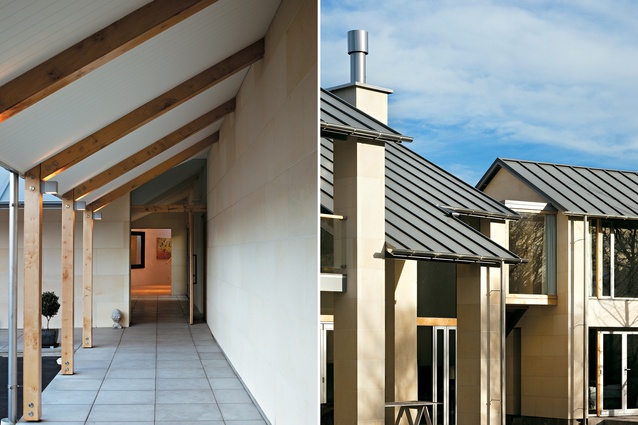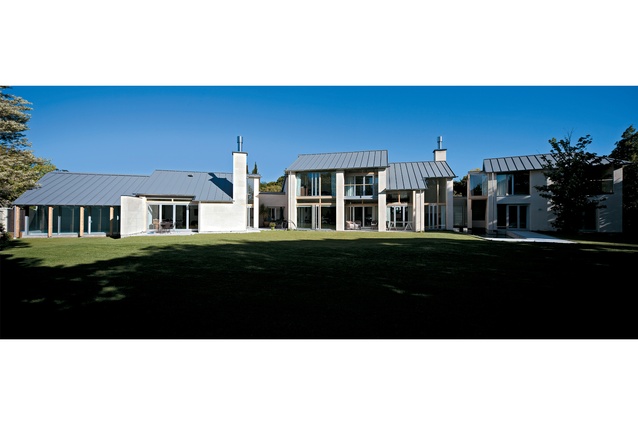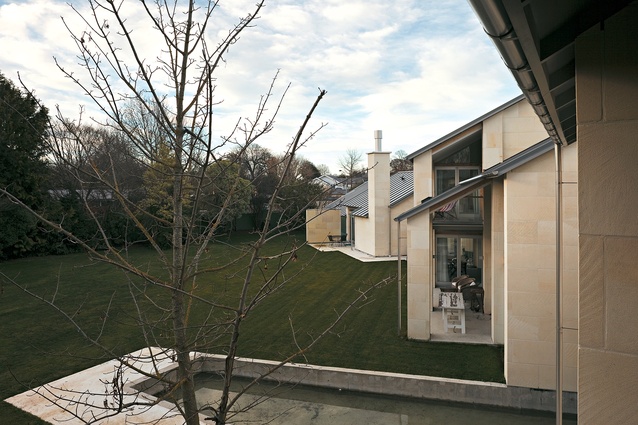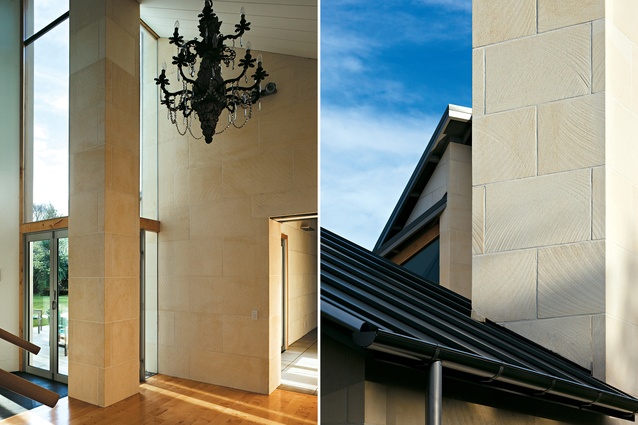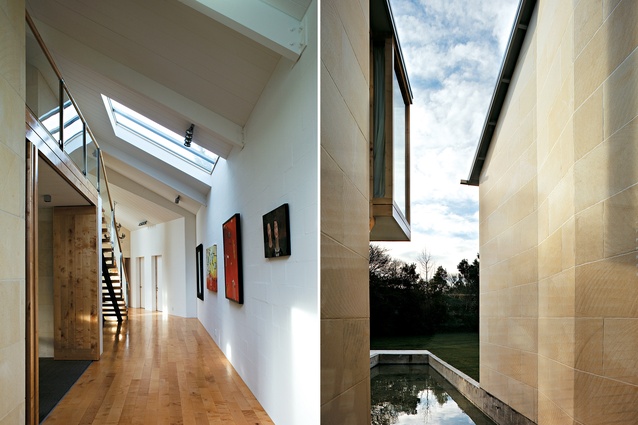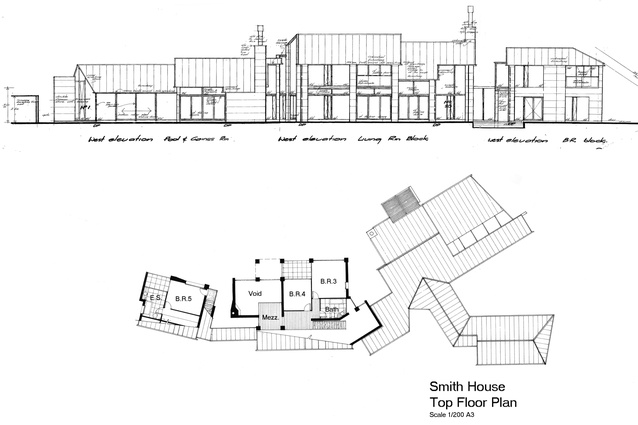Houses Revisited: Beyond fashion
This house by the late Canterbury architect Peter Beaven is a gradual revelation.
To the north west of Christchurch city centre, beyond Hagley Park and across the Avon River, lies the suburb of Fendalton, its flat expanse punctuated with mature deciduous trees, its street pattern complicated by the Avon’s meandering tributaries. The architectural character of Fendalton, particularly the area close to the park in the vicinity of Holmwood Road, Helmore’s Lane and Desmond Street, was defined in the early years of the 20th century by some of Christchurch’s foremost architects, among them Samuel Hurst Seager, Cecil Wood and Heathcote Helmore.
Much of that character still survives in spite of the subdivision of sections and the incursions of minimalist, neo-Modern houses into this environment of pitched roofs and natural materials. It is from this earlier tradition, rather than contemporary fashions, that the late Peter Beaven drew inspiration for a large, single-family house on Desmond Street.
Working from only the sketchiest of briefs, Beaven designed a house that has looked at home in its setting from the moment it was completed, yet it also explores themes that were central to the architect’s thinking for decades.
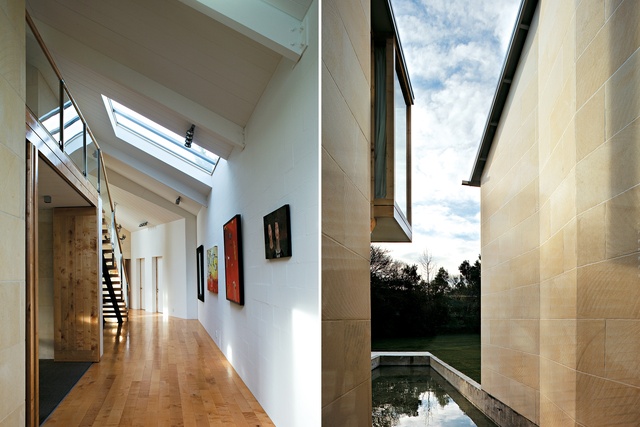
The Smith house is largely hidden behind a high concrete block wall, retained from a previous development. As a consequence, the house gradually reveals its sequence of compelling forms and spaces as it unfolds across the southern boundary of its expansive site.
A door from the street opens into a courtyard along the edge of which a cloister-like covered passage leads to the front door. From here, visitors step into a hall that extends the full length of the house, connecting three distinct pavilions that form a broad arc opening to the north.
What could easily have been a bland corridor is anything but, since its full extent only becomes apparent as one moves from east to west while its width expands and contracts and its ceiling, low inside the entrance, suddenly rises to double height in the central block before being constricted by the bridge that connects the central living space with the bedroom pavilion beyond.
The eastern-most section of the house comprises a covered swimming pool, its fully glazed north wall opening onto the garden, and a spacious games room with an Alvar Aalto-inspired fireplace. It is separated from the central block by a sheltered courtyard, which expands in width to embrace the garden.
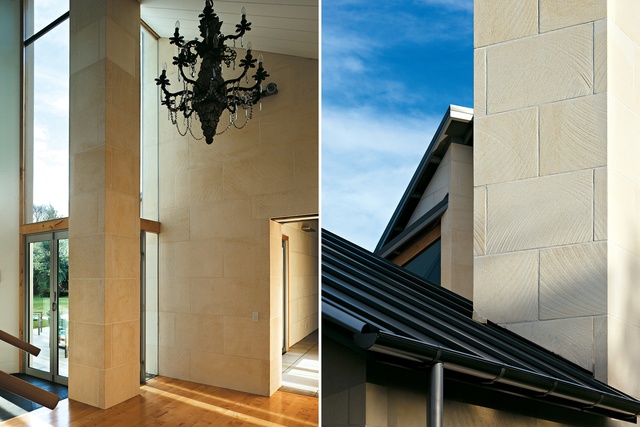
The two-storey central block incorporates kitchen, dining and sitting room on the ground floor and guest bedrooms above, but such a prosaic description conveys little of the spatial ingenuity of this part of the house. Dining and sitting rooms are surprisingly intimate for a house of this size but the limited horizontal extent of the sitting room is compensated for by its greater height.
It is, however, the junction of the east and central pavilions that provided Beaven with an opportunity to create a magical play of form and space; a soaring column intersects with angled roof planes while interior and exterior walls of glass disappear into solid masonry. This is a bravura display of revealed construction and materials with nowhere to hide unresolved elements. Designed in 2010, when Beaven was 85, this house shows that his mastery of three-dimensional form was still unrivalled in New Zealand architecture.
This formal complexity is offset by the directness of the main stair along the north wall of the hall which, at this point, expands in width to form a gallery. The fully glazed bridge to the bedroom wing crosses a pool that also fans out to the north and leads the eye towards the garden.
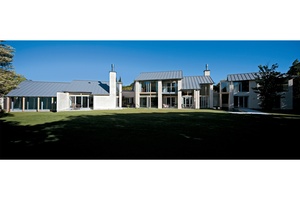
Beaven’s design for the pool was another manifestation of his ongoing preoccupation with the interconnection of architecture and water. The stair, cantilevered over the pool on the eastern side of the bedroom wing, has its underside glazed allowing further views of the pool and creating opportunities for light reflecting off the water.
Viewed from the garden, the tripartite massing of the house becomes immediately apparent, creating the impression of a cluster of small buildings rather than a single large house. There is a gradual build-up of forms as the house extends from east to west.
The dominant elements of the central block are framed to the east by the single-storey pool and games rooms, and to the west by the more compact, two-storey bedroom wing. Roofs rise and fall with the changing spatial dynamic of the interior, their broad planes complementing the alternation of solids and voids that make up the north façade.
Beaven’s choice of materials reflected his delight in revealed construction and natural finishes. Because building regulations prevented the use of solid Oamaru stone for exterior walls, concrete block faced with stone was a necessary compromise. Where block walls are exposed on the interior they have been given a bagged finish that creates the impression of a unified surface.
Floors, window surrounds and timber joinery are in locally sourced maple (sycamore), which complements the warm colour of the Oamaru stone. The steel I beams that form the roof ridges are exposed, as are the fair-faced concrete beams in the central pavilion. Painted surfaces are white throughout, accentuating the natural colours of timber and stone.
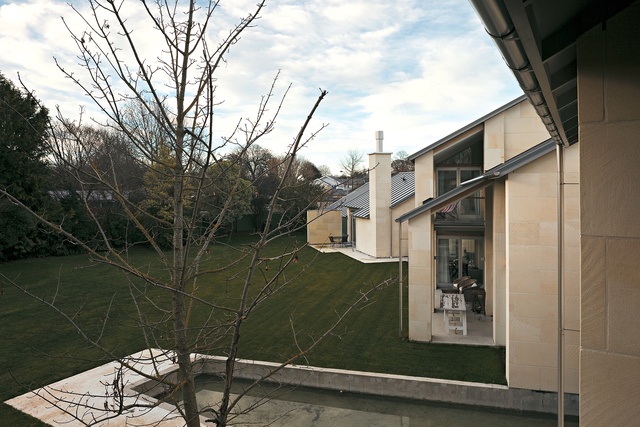
The natural warmth of the timber is especially apparent in the vertically boarded street and entrance doors and in the sculptural treads of the main stair, their crafted quality indicative of the attention to detail that is evident throughout the house.
It takes a rare client to place complete trust in an architect, but that trust has been rewarded here. Within an overall framework that acknowledges local traditions and materials, Peter Beaven designed a modern house that combines spatial complexity and formal invention.
Junctions that, in the hands of a less skilled architect, would have been awkward, appear to have been created almost for the pleasure of overcoming the design problems they present. These are just the sorts of challenges that Canterbury’s Gothic Revival architects, from whom Beaven continually drew inspiration, would also have enjoyed surmounting.
This article first appeared in Houses magazine


